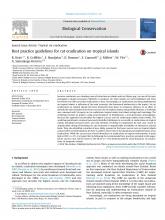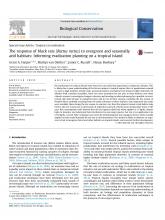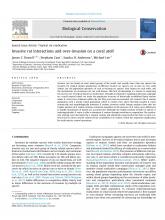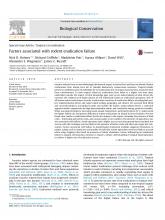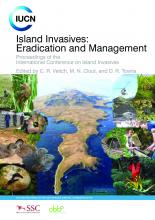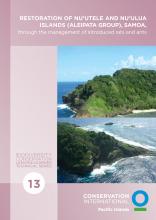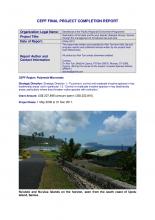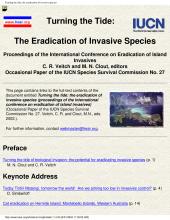Special Issue Article: Tropical rat eradication. The response of black rats (Rattus rattus) to evergreen and seasonally arid habitats: Informing eradication planning on a tropical island. Biological Conservation. Volume 185, May 2015


Island and Ocean Ecosystems, BRB
Available Online
Grant A. Harper
,
James C. Russell
,
Martijn van Dinther
,
Nancy Bunbury
2015
Rat eradications on tropical islands have been less successful than operations in temperate climates. This is likely due to poor understanding of the factors unique to tropical regions that rat populations respond to, such as high numbers of land crabs, aseasonal climates and habitats not found at higher latitudes. On Aldabra Atoll, southern Seychelles, black rats were monitored for one year in three habitats over three climatic seasons to investigate changes in density and breeding to inform planning for a possible rat eradication. Rats bred all year in mangrove forest and in two of three seasons, including the dry season, in Pemphis forest, probably resulting from the saline tolerance of these habitats: lush vegetation and seeds were available there during the dry season. In contrast, rats from the adjacent mixed-scrub habitat only bred in the wet season due to desiccation of vegetation and lack of fresh water during other times of the year. Bait consumption trials showed that all rats ingested dyed bait when applied at 15 kg/ha, despite high rat densities and substantial bait interference by non-target species, but not at an application rate of 10 kg/ha. A novel bola technique was tested for distributing bait into mangrove forest, where aerially applied rat bait would normally be lost due to tidal inundation. The method is likely to improve rat exposure to bait in mangrove forest and other habitats on tropical islands, and warrants further development.
